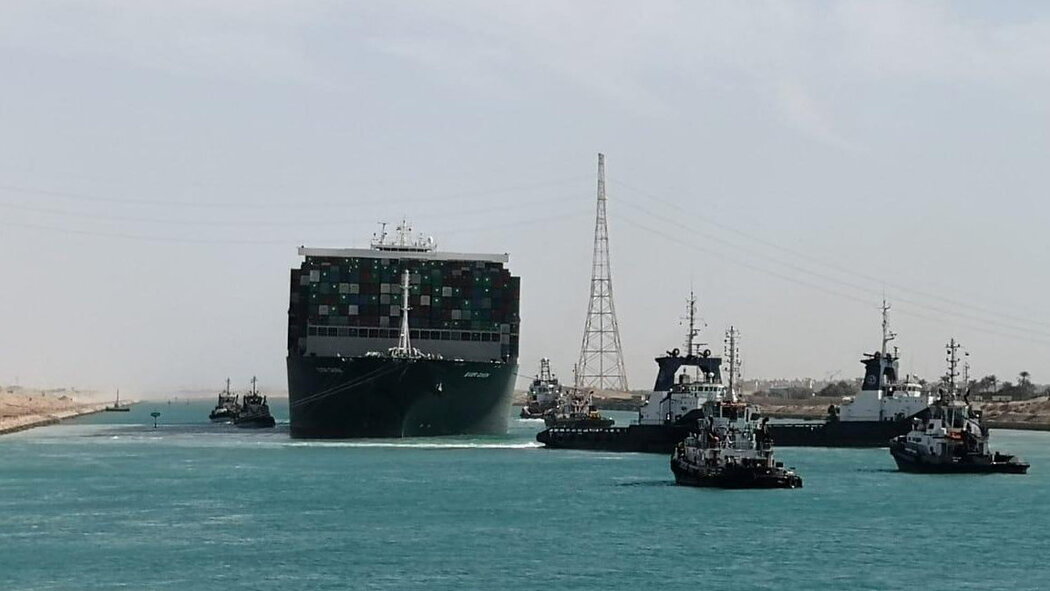

Efforts to remove the 400-meter-long and 60-meter-wide ‘Evergreen’ ship from the path stuck in the middle of the Suez Canal continued till Saturday. Officials in the campaign to remove ‘Evergreen’ from the route of the Suez Canal say that this operation may take several days or maybe weeks.
And all this is not a small thing. Every day $ 9.5 billion worth of goods passes through the Suez Canal. Whatever the impact of the ‘Evergreen’ incident, but this is not the first time that the road to the Suez Canal has been closed for business.
This is the matter of June 1967. Egypt, Syria and Jordan were fighting Israel and 15 merchant ships were caught en route to the Suez Canal amidst the shelling of the two factions. In history books, that battle is referred to as ‘Six Day War’. And as history testifies, that battle lasted only six days.
But the route to the Suez Canal was closed. One of the 15 ships stranded in the canal sank and the remaining 14 remained imprisoned there for the next eight years. But the question arises that why did the Suez Canal remain closed for such a long time? And how did this struggle begin?
Arab-Israel War
Egypt, under the leadership of President Gamal Abdel Nasser, started increasing deployment of troops along the Israeli border from May 1967. They said that if there is any kind of war with Israel, then their aim is to destroy their neighboring country.
Syria also began to threaten Israel with similar threats of destruction. The fight finally began on June 5, 1967, after being tense for weeks. On the same day, Israel bombarded Egypt and shocked 90% of its air force capacity.
Israel also met the Syrian Air Force. When this bombing took place, 15 merchant ships from Bulgaria, Czechoslovakia, France, Poland, Sweden, West Germany, Britain and the United States were passing through the Suez Canal at that time.
At that time Peter Flack was stationed on the British ship ‘Agapeñor’. In 2010, he told BBC Radio Four, “As our ship reached the southern tip of the Suez Canal, our captain told us that the war between Israel and the Arab countries had begun.”
“As we moved forward, we saw fighters flying through the desert. I remember well. The Israeli planes were flying low, the Egyptian soldiers were bombing the airport and their target was unmistakable.”
Suez Canal Trail
‘Agapenor’, carrying rubber and plastic rubber from Britain to Britain, was one of those 15 ships stranded in the Suez Canal.
John Hughs, who was stationed on the ‘Melampus’ ship carrying walnuts and palm oil from China, told BBC Radio Four, “Two Israeli fighters flew from the desert of Sinai. They passed over our ship. It was so fast that we felt, the earplugs would explode. “
A ship sank in the bombing of Israel and it was an American ship. Meanwhile, ships in the Suez Canal had to take refuge in its Great Bitter Lake.
Sail Mercogliano, professor of maritime history at Campbell University in the United States, says, “The ships stranded in the Suez Canal at that time did not want to see themselves as targets. So they took refuge in Great Bitter Lake.”
On the second day of the war, Egypt sank ships at the end of the Canal. Explosives were placed there so that the road was blocked and Israel could not use the Canal for movement. With the defeat of the three Arab countries, this war ended on June 10. But Egypt kept the Canal closed and 14 ships stranded there could not get out.
Also Read: INDONESIA: FIERCE FIRE IN A JAVA REFINERY







